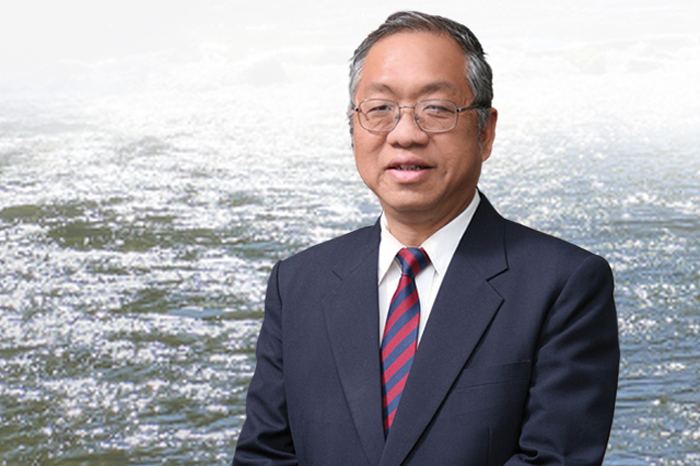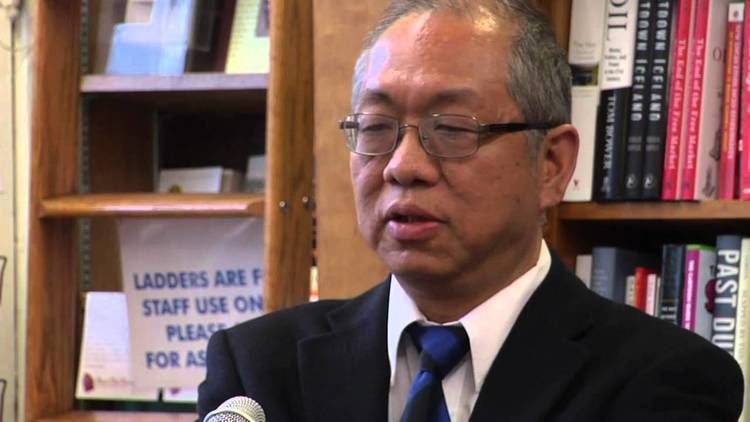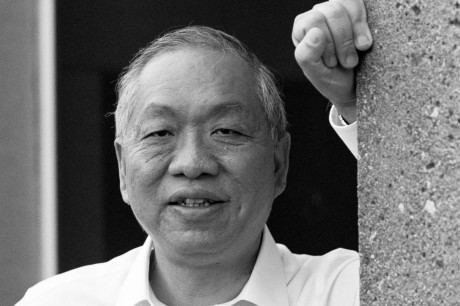Fields Mathematics | Role Mathematician Name Shing-Tung Yau | |
 | ||
Institutions Harvard UniversityStanford UniversityStony Brook University Alma mater Chinese University of Hong Kong (B.A. 1969)University of California, Berkeley (Ph. D 1971) Doctoral students Richard Schoen (Stanford, 1977)Jun Li (Stanford, 1989)Huai-Dong Cao (Princeton, 1986)Gang Tian (Harvard, 1988)Lizhen Ji (Northeastern, 1991)Kefeng Liu (Harvard, 1993)Mu-Tao Wang (Harvard, 1998)Chiu-Chu Melissa Liu (Harvard, 2002) Notable awards John J. Carty Award (1981)Veblen Prize (1981)Fields Medal (1982)Crafoord Prize (1994)National Medal of Science (1997)Wolf Prize (2010) Books The Shape of Inner Space: St, Lectures on Harmonic, Ordinary Differential Equations, Lectures on Differenti, Mirror Symmetry I Similar People | ||
Shing tung yau steve nadis string theory and the universes s hidden dimensions
Shing-Tung Yau (; Chinese: 丘成桐; pinyin: Qiū Chéngtóng; Cantonese Yale: Yāu Sìngtùng; born April 4, 1949) is a Hong Kong and naturalised American mathematician. He was awarded the Fields Medal in 1982. He is currently the William Caspar Graustein Professor of Mathematics at Harvard.
Contents
- Shing tung yau steve nadis string theory and the universes s hidden dimensions
- Prof shing tung yau speech in c 100 17th conf 2008 1 2
- Biography
- Contributions to mathematics
- Calabi conjecture
- Positive mass conjecture and existence of black holes
- Smith conjecture
- Hermitian YangMills connection and stable vector bundles
- Frankel conjecture
- Mirror conjecture
- Gradient estimates and Harnack inequalities
- Uniformization of complex manifolds
- Harmonic maps and rigidity
- Minimal submanifolds
- Open problems
- Harmonic functions with controlled growth
- Rank rigidity of nonpositively curved manifolds
- KhlerEinstein metrics and stability of manifolds
- Mirror symmetry
- Initiatives in mainland China and Taiwan
- Outreach
- Honors and awards
- Prizes and awards
- Research fellowships
- Honorary professorships
- Honorary degrees
- Academic memberships
- Poincar conjecture controversy
- Publications
- References

Yau's work is mainly in differential geometry, especially in geometric analysis. His contributions have influenced both physics and mathematics, and he has been active at the interface between geometry and theoretical physics. His proof of the positive energy theorem in general relativity demonstrated—sixty years after its discovery—that Einstein's theory is consistent and stable. His proof of the Calabi conjecture allowed physicists to show, using Calabi–Yau compactification, that string theory is a viable candidate for a unified theory of nature. Calabi–Yau manifolds are part of the standard toolkit for string theorists today.

Prof shing tung yau speech in c 100 17th conf 2008 1 2
Biography

Yau was born in Shantou, Guangdong Province, China with Hakka ancestry in Jiaoling, Guangdong to a family of eight children. When he was only a few months old, his family emigrated to Hong Kong, where they lived in Yuen Long and Shatin. Yau's father, Chiou Chenying, was a philosophy professor.

After graduating from Pui Ching Middle School, he studied mathematics at the Chinese University of Hong Kong from 1966 to 1969. Yau left for the University of California, Berkeley in the fall of 1969, where he received his Ph.D. in mathematics two years later, under the supervision of Shiing-Shen Chern. He spent a year as a member of the Institute for Advanced Study at Princeton before joining Stony Brook University in 1972 as an assistant professor. In 1974, he became an associate professor at Stanford University. Yau has held American citizenship since 1990.
Since 1987, he has been at Harvard University. He is also involved in the activities of mathematics research institutes in Hong Kong and the Chinese mainland. In addition to his research interests, he is active in educational reform initiatives for primary and secondary-school mathematics in China, and his criticisms of the Chinese mainland education system, corruption in the academic world in the Chinese mainland, and the quality of mathematical research and education, have been widely publicized.
Contributions to mathematics

Duong Hong Phong of Columbia University has commented on the influence of Yau's research in geometric analysis.
Calabi conjecture
Yau's solution of the Calabi conjecture, concerning the existence of an Einstein–Kähler metric, has far-reaching consequences. The existence of such a canonical unique metric allows one to give explicit representatives of characteristic classes. Calabi–Yau manifolds are now fundamental in string theory, where the Calabi conjecture provides an essential piece in the model.
In algebraic geometry, the Calabi conjecture implies the Miyaoka–Yau inequality on Chern numbers of surfaces, a characterization of the complex projective plane and quotients of the two-dimensional complex unit ball, an important class of Shimura varieties.
Yau also made a contribution in the case that the first Chern number c1 > 0, and conjectured its relation to the stability in the sense of geometric invariant theory in algebraic geometry. This has motivated the work of Simon Donaldson on scalar curvature and stability. Another important result of Donaldson–Uhlenbeck–Yau is that a holomorphic vector bundle is stable (in the sense of David Mumford) if and only if there exists an Hermitian–Yang–Mills metric on it. This has many consequences in algebraic geometry, such as the characterization of certain symmetric spaces, Chern number inequalities for stable bundles, and the restriction of the fundamental groups of a Kähler manifold.
Positive mass conjecture and existence of black holes
Yau pioneered the method of using minimal surfaces to study geometry and topology. By analyzing how minimal surfaces behave in space-time, Yau and Richard Schoen proved the long-standing conjecture that the total mass in general relativity is positive.
This theorem implies that flat space-time is stable, a fundamental issue for the theory of general relativity. Briefly, the positive mass conjecture says that if a three-dimensional manifold has positive scalar curvature and is asymptotically flat, then a constant that appears in the asymptotic expansion of the metric is positive. A continuation of the above work leads to another result in relativity proved by Yau, an existence theorem for black holes. Yau and Schoen continued their work on manifolds with positive scalar curvature, which led to Schoen's final solution of the Yamabe problem.
Smith conjecture
Yau and William H. Meeks resolved the well-known question of whether the Douglas solution of a minimal disk for an external Jordan curve, the Plateau problem, in three space, is always embedded if the boundary curve is a subset of a convex boundary. They then went on to prove that these embedded minimal surfaces are equivariant for finite group actions. Combining this work with a result by William Thurston, Cameron Gordon assembled a proof of the Smith conjecture: for any cyclic group acting on a sphere, the set of fixed points is not a knotted curve.
Hermitian Yang–Mills connection and stable vector bundles
Yau and Karen Uhlenbeck proved the existence and uniqueness of Hermitian–Einstein metrics (or equivalently Hermitian Yang–Mills connections) for stable bundles on any compact Kähler manifold, extending an earlier result of Donaldson for projective algebraic surfaces, and M. S. Narasimhan and C. S. Seshadri for algebraic curves. Both the results and methods of this paper have been influential in parts of both algebraic geometry and string theory. This result is now usually called the Donaldson–Uhlenbeck–Yau Theorem.
Frankel conjecture
Yau and Yum-Tong Siu proved the 1981 Frankel conjecture in complex geometry, stating that any compact positively curved Kähler manifold is biholomorphic to complex projective space. An independent proof was given by Shigefumi Mori, using methods of algebraic geometry in positive characteristic.
Mirror conjecture
With Bong Lian and Kefeng Liu, Yau proved the mirror formulas conjectured by string theorists. These formulas give the explicit numbers of rational curves of all degrees in a large class of Calabi–Yau manifolds, in terms of the Picard–Fuchs equations of the corresponding mirror manifolds. Givental had earlier sketched a proof of the mirror formulas in a paper on "Equivariant Gromov-Witten invariants" (Internat. Math. Res. Notices 1996), but his argument contained substantial gaps and wrong arguments. Some of these were fixed and new key ideas were added to give a complete proof in the paper by Lian-Liu-Yau.
Gradient estimates and Harnack inequalities
Yau developed the method of gradient estimates for Harnack's inequalities. This method has been used and refined by Yau and other mathematicians to attack, for example, bounds on the heat kernel. Early in 1981, Yau suggested to Richard S. Hamilton that he use the Ricci flow to realize naturally the canonical decomposition of a three-dimensional manifold into pieces, each of which has a geometric structure, in the Thurston program. Hamilton amplified their results, leading to the Li–Yau–Hamilton inequality for the Ricci flow equations.
Gradient estimates were also used in Yau's joint work with Shiu-Yuen Cheng to give a complete proof of the higher-dimensional Hermann Minkowski problem and the Dirichlet problem for the real Monge–Ampère equation, and other results on the Kähler–Einstein metric of bounded pseudoconvex domains.
Uniformization of complex manifolds
When Yau was a graduate student, he started to generalize the uniformization theorem of Riemann surfaces to higher-dimensional complex Kähler manifolds. For a compact manifold with positive bisectional curvature, the Frankel conjecture - proved by Siu and Yau, and independently by Mori - shows that it is complex projective space. Yau proposed a series of conjectures when the manifold is non-compact, and made contributions towards their solutions. For example, when the bisectional curvature is positive, it must be biholomorphic to Cn.
Harmonic maps and rigidity
When Yau was working on his thesis about manifolds with non-positive curvature and their fundamental groups, he realized that it is possible to use harmonic maps to give alternative proofs of some results there. He was aware of the Mostow rigidity theorem for locally symmetric spaces, which he used to prove the uniqueness of complex structure of quotients of complex balls. He proposed that harmonic maps be used to prove rigidity of the complex structure for Kähler manifolds with strongly negative curvature, a program that was successfully carried out by Yum-Tong Siu. This method, the Siu-Yau method, has been extended to prove strong and super-rigidities of many locally symmetric spaces.
Minimal submanifolds
Yau has used minimal submanifolds in his solutions of the Positive Mass Conjecture, the Smith conjecture, and the Frankel conjecture, among others. Many other mathematicians have since applied minimal surfaces to other problems. Mikhail Gromov's introduction of pseudo-holomorphic curves in symplectic geometry has also had an important impact on this field.
Open problems
Yau has compiled an influential set of open problems in geometry.
Harmonic functions with controlled growth
One of Yau’s problems is about bounded harmonic functions, and harmonic functions on noncompact manifolds of polynomial growth. After proving non-existence of bounded harmonic functions on manifolds with positive curvatures, he proposed the Dirichlet problem at infinity for bounded harmonic functions on negatively curved manifolds, and then proceeded to harmonic functions of polynomial growth. Dennis Sullivan tells a story about Yau's geometric intuition, and how it led him to reject an analytical proof of Sullivan's. Michael Anderson independently found the same result about bounded harmonic function on simply connected negatively curved manifolds using a geometric convexity construction.
Rank rigidity of nonpositively curved manifolds
Again motivated by Mostow's strong rigidity theorem, Yau called for a notion of rank for general manifolds extending the one for locally symmetric spaces, and asked for rigidity properties for higher rank metrics. Advances in this direction have been made by Ballmann, Brin and Eberlein in their work on non-positive curved manifolds, Gromov's and Eberlein's metric rigidity theorems for higher rank locally symmetric spaces and the classification of closed higher rank manifolds of non-positive curvature by Ballmann and Burns-Spatzier. This leaves rank 1 manifolds of non-positive curvature as the focus of research. They behave more like manifolds of negative curvature, but remain poorly understood in many regards.
Kähler–Einstein metrics and stability of manifolds
It is known that if a complex manifold has a Kähler–Einstein metric, then its tangent bundle is stable. Yau realized early in 1980s that the existence of special metrics on Kähler manifolds is equivalent to the stability of the manifolds. Various people including Simon Donaldson have made progress to understand such a relation.
Mirror symmetry
He has collaborated with string theorists including Strominger, Vafa and Witten, and as post-doctorals from theoretical physics with B. Greene, E. Zaslow and A. Klemm . The Strominger–Yau–Zaslow program is to construct explicitly mirror manifolds. David Gieseker wrote of the seminal role of the Calabi conjecture in relating string theory with algebraic geometry, in particular for the developments of the SYZ program, mirror conjecture and Yau–Zaslow conjecture.
Initiatives in mainland China and Taiwan
Yau was born in China but grew up in Hong Kong. After the door of China was opened to the West in the late 1970s, Yau revisited China in 1979 on the invitation of Hua Luogeng.
To help develop Chinese mathematics, Yau started by educating students from China. He then began establishing mathematics research institutes and centers, organizing conferences at all levels, initiating out-reach programs, and raising private funds for these purposes. John Coates has commented on Yau's success as a fundraiser. The first of Yau's initiatives is The Institute of Mathematical Sciences at The Chinese University of Hong Kong in 1993. The goal is to “organize activities related to a broad variety of fields including both pure and Applied mathematics, scientific computation, image processing, mathematical physics and statistics. The emphasis is on interaction and linkages with the physical sciences, engineering, industry and commerce.”
Yau's second major initiative is the Morningside Center of Mathematics in Beijing, established in 1996. Part of the money for the building and regular operations was raised by Yau from the Morningside Foundation in Hong Kong. Yau also proposed organizing the International Congress of Chinese Mathematicians, which is now held every three years. The first congress was held at the Morningside Center from December 12 to 18, 1998.
His third initiative is the Center of Mathematical Sciences at Zhejiang University, established in 2002. Yau is the director of all three mathematics institutes and visits them on a regular basis.
Yau went to Taiwan to attend a conference in 1985. In 1990, he was invited by Dr. C.-S. Liu, then the President of National Tsinghua University, to visit the university for a year. A few years later, he convinced Liu, then-chairman of National Science Council, to create the National Center of Theoretical Sciences (NCTS), which was established at Hsinchu in 1998. He was the chairman of the Advisory Board of the NCTS until 2005.
Outreach
His classmate at college Y.-C.Siu speaks of Yau as an ambassador of mathematics. In Hong Kong, with the support of Ronnie Chan, Yau set up the Hang Lung Award for high school students. He has also organized and participated in meetings for high school and college students, such as the panel discussions Why Math? Ask Masters! in Hangzhou, July 2004, and The Wonder of Mathematics in Hong Kong, December 2004. Yau organized the JDG conference surveying developments in geometry and related fields, in addition to the annual Current development of mathematics conference. Yau also co-initiated a series of books on popular mathematics, "Mathematics and Mathematical People".
Honors and awards
Yau has received numerous honors and awards, including:
Prizes and awards
Research fellowships
Honorary professorships
Honorary degrees
Academic memberships
Poincaré conjecture controversy
In August 2006, a New Yorker article, Manifold Destiny, alleged that Yau was downplaying Grigori Perelman's work on the Poincaré conjecture. Yau claimed that this article was defamatory, and threatened a lawsuit. The New Yorker stood by the story and no lawsuit was filed. In September 2006, Yau established a public relations website, which disputed points in it. Seventeen mathematicians, including two quoted in the New Yorker article, posted letters of strong support.
On October 17, 2006, a more sympathetic profile of Yau appeared in The New York Times. It devoted about half its length to the Perelman affair. The article stated that Yau had alienated some colleagues, but represented Yau's position as that Perelman's proof was not generally understood and he "had a duty to dig out the truth of the proof".
On June 8, 2005, Richard S. Hamilton had an interview in Morningside Center of Mathematics, Beijing. He highly praised Yau's leadership and the contribution of Chinese mathematicians to the Poincare conjecture.
